近日有个做音圈的客户使用乐泰3106做中心胶用途,据反映感觉粘接力不太够而且觉得硬度也不够。 给其推荐了两款产品重新尝试,在乐泰官网下载了这份TDS资料,摘录如下,感兴趣的朋友可以去下载PDF版本:
PRODUCT DESCRIPTION
LOCTITE® 3106™ provides the following product
characteristics:
Technology Acrylic
Chemical Type Acrylated urethane
Appearance (uncured) Transparent liquidLMS
Components One component – requires no mixing
Viscosity Medium, thixotropic
Cure Ultraviolet (UV)/ visible light
Cure Benefit Production – high speed curing
Application Bonding
Flexibility Enhances load bearing & shock
absorbing characteristics of the bond
area.
LOCTITE® 3106™ is primarily designed for bonding rigid or
flexible PVC to polycarbonate where large gap filling
capabilities and flexible joints are desired. The product has
shown excellent adhesion to a wide variety of substrates
including glass, many plastics and most metals. The thixotropic
nature of LOCTITE® 3106™ reduces the migration of liquid
product after application to the substrate.
TYPICAL PROPERTIES OF UNCURED MATERIAL
Specific Gravity @ 25 °C 1.08
Refractive Index 1.48
Flash Point – See MSDS
Viscosity, Brookfield – RVT, 25 °C, mPa·s (cP):
Spindle 4, speed 20 rpm 3,500 to 7,500LMS
TYPICAL CURING PERFORMANCE
LOCTITE® 3106™ can be cured by exposure to UV and/or
visible light of sufficient intensity. To obtain full cure on
surfaces exposed to air, radiation @ 220 to 260 nm is also
required. The speed of cure will depend upon the UV intensity
and spectral distribution of the light source, the exposure time
and the light transmittance of the substrates.
Stress Cracking
Liquid adhesive is applied to a polycarbonate bar 6.4 cm by
13 mm by 3 mm which is then flexed to induce a known stress
level.
Stress Cracking, ASTM D 3929, minutes:
7 N/mm² stress on bar >15
12 N/mm² stress on bar 13 to 14
Fixture Time
Fixture time is defined as the time to develop a shear strength
of 0.1 N/mm².
UV Fixture Time, Glass microscope slides, seconds:
Black light, Zeta® 7500 light source:
6 mW/cm², measured @ 365 nm ≤15LMS
UV Fixture Time, Polycarbonate to PVC, seconds:
Metal halide bulb, Zeta® 7400:
30 mW/cm², measured @ 365 nm, <5
Electrodeless, H & V bulbs:
50 mW/cm², measured @ 365 nm, <5
Electrodeless, D bulb:
50 mW/cm², measured @ 365 nm, <5
Depth of Cure vs. Irradiance (365 nm)
The graph below shows the increase in depth of cure with time
at 50mW/cm² – 100mW/cm² as measured from the thickness
of the cured pellet formed in a 15mm diameter PTFE die.
Note: When exposed to a V Bulb at irradiances of 50 and 100
mW/cm² for 30 seconds, a depth of cure greater than 13 mm
was achieved. The performance for medium pressure Hg will
be similar to Electrodeless system, H bulb
TYPICAL PROPERTIES OF CURED MATERIAL
Cured @ 30 mW/cm², measured @ 365 nm, for 80 seconds using
a glass filtered metal halide light source
Physical Properties:
Shore Hardness, ISO 868, Durometer D 53
Refractive Index 1.5
Water Absorption, ISO 62, %:
2 hours in boiling water 3.18
Elongation, at break, ISO 527-3, % 250
Tensile Modulus, ISO 527-3 N/mm² 255
(psi) (37,000)
Tensile Strength, at break, ISO 527-3 N/mm² 18.6
(psi) (2,700)
Electrical Properties:
Surface Resistivity, IEC 60093, Ω∙cm 9.2×1014
Volume Resistivity, IEC 60093, Ω·cm 7.7×1014
Dielectric Breakdown Strength, , kV/mm 26
Dielectric Constant / Dissipation Factor, IEC 60250:
100-Hz 5.17 / 0.04
1-kHz 5.01 / 0.02
1-MHz 4.61 / 0.04
TYPICAL PERFORMANCE OF CURED MATERIAL
Adhesive Properties
Cured @ 30 mW/cm², measured @ 365 nm, for 80 seconds using
a metal halide light source, (samples with 0.5 mm gap).
Lap Shear Strength, ISO 4587:
Polycarbonate N/mm² *5.2
(psi) (750)
* substrate failure
TYPICAL ENVIRONMENTAL RESISTANCE
Cured @ 30 mW/cm², measured @ 365 nm, for 80 seconds using
a metal halide light source, (samples with 0.5 mm gap).
Lap Shear Strength, ISO 4587:
Polycarbonate:
0.5 mm gap
Chemical/Solvent Resistance
Aged under conditions indicated and tested @ 22 °C.
% of initial strength
Environment °C 2 h 24 h 170 h
Boiling water 100 * 100 ——– ——–
Water immersion 49 * 100 ——– ——–
Water immersion 87 * 100 ——– ——–
Isopropanol immersion 22 ——– 95 ——–
Heat/humidity 38 ——– ——– * 100
Heat Aging
Lap Shear Strength, ISO 4587, % of initial strength:
Polycarbonate:
Aged @ 71 °C for 170 hours *100
Aged @ 71 °C for 340 hours *100
Aged @ 93 °C for 170 hours *100
Aged @ 93 °C for 340 hours *100
* substrate failure
GENERAL INFORMATION
This product is not recommended for use in pure oxygen
and/or oxygen rich systems and should not be selected as
a sealant for chlorine or other strong oxidizing materials.
For safe handling information on this product, consult the
Material Safety Data Sheet (MSDS).
Where aqueous washing systems are used to clean the
surfaces before bonding, it is important to check for
compatibility of the washing solution with the adhesive. In
some cases these aqueous washes can affect the cure and
performance of the adhesive.
This product is not normally recommended for use on plastics
(particularly thermoplastic materials where stress cracking of
the plastic could result). Users are recommended to confirm
compatibility of the product with such substrates.
Directions for use
1. This product is light sensitive; exposure to daylight, UV
light and artificial lighting should be kept to a minimum
during storage and handling.
2. The product should be dispensed from applicators with
black feedlines.
3. For best performance bond surfaces should be clean and
free from grease.
4. Cure rate is dependent on lamp intensity, distance from
light source, depth of cure needed or bondline gap and
light transmittance of the substrate through which the
radiation must pass.
5. Recommended intensity for cure in bondline situation is 5
mW/cm² minimum (measured at the bondline) with an
exposure time of 4-5 times the fixture time at the same
intensity.
6. For dry curing of exposed surfaces, higher intensity UV is
required (100 mW/cm²).
7. Cooling should be provided for temperature sensitive
substrates such as thermoplastics.
8. Crystalline and semi-crystalline thermoplastics should be
checked for risk of stress cracking when exposed to liquid
adhesive.
9. Excess adhesive can be wiped away with organic solvent.
10. Bonds should be allowed to cool before subjecting to any
service loads.
Loctite Material SpecificationLMS
LMS dated April-22, 2002. Test reports for each batch are
available for the indicated properties. LMS test reports include
selected QC test parameters considered appropriate to
specifications for customer use. Additionally, comprehensive
controls are in place to assure product quality and
consistency. Special customer specification requirements may
be coordinated through Henkel Quality.
Storage
Store product in the unopened container in a dry location.
Storage information may be indicated on the product container
labeling.
Optimal Storage: 8 °C to 21 °C. Storage below 8 °C or
greater than 28 °C can adversely affect product properties.
Material removed from containers may be contaminated during
use. Do not return product to the original container. Henkel
Corporation cannot assume responsibility for product which
has been contaminated or stored under conditions other than
those previously indicated. If additional information is required,
please contact your local Technical Service Center or
Customer Service Representative.
Conversions
(°C x 1.8) + 32 = °F
kV/mm x 25.4 = V/mil
mm / 25.4 = inches
μm / 25.4 = mil
N x 0.225 = lb
N/mm x 5.71 = lb/in
N/mm² x 145 = psi
MPa x 145 = psi
N·m x 8.851 = lb·in
N·m x 0.738 = lb·ft
N·mm x 0.142 = oz·in
mPa·s = cP
点击下载PDF文件:
 loctite 3106 TDS (66.4 KB, 6 次)
loctite 3106 TDS (66.4 KB, 6 次)
您没有权限下载此文件。


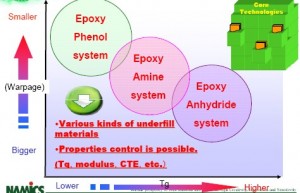
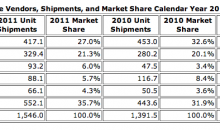
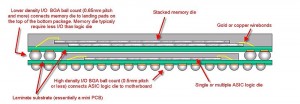
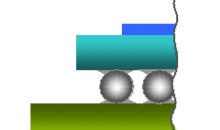
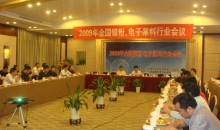
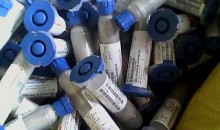
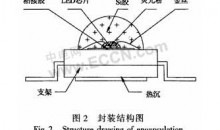
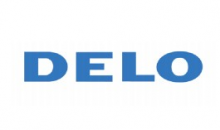
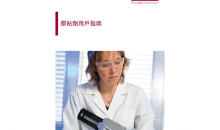
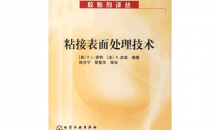
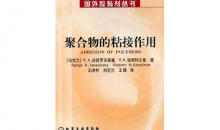
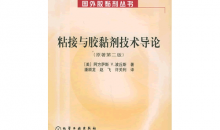
联系站长
Email:Anndiqiu#Gmail.com
Mobile Phone:13923499497
热门文章
数字
$2,242.7 Million Explore Global laminating adhesives market that is poised to be worth $2,242.7 million by 2019 了解更多 »